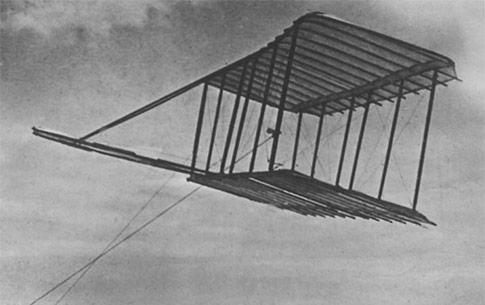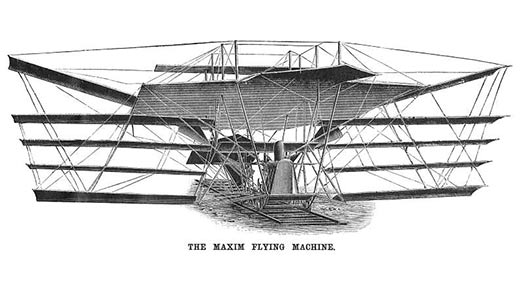It was September 1901, in Dayton, Ohio, and Wilbur Wright was frustrated. The previous year, 1900, he had built and tested, with his brother Orville’s help, their first full-size glider. It was designed using the most up-to-date information about wing design available. His plan had been to “kite” the glider with himself as a pilot. He wanted to test his roll-control mechanism, and build practice hours “flying” and maintaining control of an aircraft.
|
ADVERTISEMENT |
But things had not gone as he expected. The Wrights were the first ones to actually measure the lift and drag forces generated by their plane’s wings, and in 1900, they were seeing only about one-third of the lift predicted by the equations they were using.
The picture below shows the 1900 glider being “kited.” Notice the angle of the line and the steep angle of attack required to fly, even in a stiff 20-knot breeze. Although they could get some basic tests done, it was clear that this glider would not suit their purpose.

…

Comments
Where they went wrong
Interesting article on some of their errors:http://wrightstories.com/wrights-confused-over-calculation-of-lift/Most educators still get it wrong in claiming lift due to Bernoulli, 1738 rather than Coanda, 1936.
Add new comment